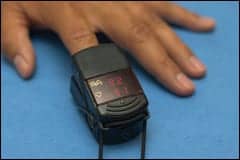Accurate recognition and interpretation of sleep states are important when scoring polysomnographic studies
The scoring of polysomnographic data is not just about the interpretation of waveforms and calculating percents and indices. The scoring of sleep data is a team effort, consisting of the sleep medicine team.
The collaborative process begins with the physician’s judgment in ordering an overnight polysomnogram as the diagnostic tool. A well-trained and experienced sleep technologist should review the patient’s chart and physician’s orders and ascertain a “clinical picture” of the patient. This includes such factors as age, concomitant illness, and reason for the study.
The physician’s order determines which montage and protocol the technologist will apply to the data collection process. It is the responsibility of the recording technologist to collect “good” data, meaning that the data is an accurate accounting of what has occurred, is artifact free, and correctly reflects the clinical needs of the patient. The skill and knowledge of the night technologist are imperative in the prompt and accurate interpretation or scoring of the data.
The “scorer” must be as adept at identifying and interpreting the waveforms and artifact as the recording technologist. The scoring of sleep studies is predicated on the interpretation of “normal” data. In other words, one must have knowledge of the “normal” in order to discover the “atypical” or “pathological.”
In 1960, an inaugural meeting was held to create a standard for the scoring of sleep states. It was not until 1968 that the Manual of Standardized Terminology, Techniques and Scoring System for Sleep Stages of Human Subjects was available. This scoring tool has become the gold standard for adult patients. Although the technology of sleep medicine has entered the computer age, the basic information presented in the manual still has far-reaching applicability.
Figure 1. Representative electroencephalographic tracings during
relaxed wakefulness, NREM stages 1-4, and REM sleep. (From Hauri
P. Current Concepts. Bridgewater, NJ: Pharmacia & Upjohn Inc;
1992:5 with permission.)
It would benefit the reader to review this manual and apply the recommendations accordingly to their practice. In this microscopic overview, the manual depicts the sleep stages as follows:
- stage 1: Relatively low voltage mixed frequency electroencephalograph (EEG), without rapid eye movements, predominantly theta (2-7 Hz). Vertex sharp waves may occur.
- stage 2: Relatively low voltage mixed frequency EEG with sleep spindles and K complexes. No eye movements.
- stage 3: 20%- <50% of the epoch is delta (0.5-2 Hz) with an amplitude of at least 75 µV. No eye movements.
- stage 4: Ž50% of the epoch is delta. No eye movements.
The above stages comprise non-rapid eye movement (NREM) sleep and encompass collectively about 80% of the total sleep time. A typical schematic of sleep portrays the patient entering sleep through stage 1, progressing through stages 2-4, and then entering rapid eye movement (REM)—a pattern that repeats itself through the night, with each REM episode becoming progressively longer. NREM and REM sleep alternate at about 90-minute intervals.1,2
REM sleep comprises about 20% of the total sleep time. The EEG of REM is low voltage mixed frequency. Epi-sodic REMs are present. Usually spindles and K complexes are absent. One of the most dramatic features of REM is the lack of muscle tone, and, of course, other physiological phenomena coexist with REM.1,2
When respiratory parameters, oximetry, recording of esophageal pH, muscle tone, additional leads for EEG, heart, and a multitude of other specialized parameters are added, one can indeed appreciate the complexity of the field of sleep medicine.
The convention for scoring the polysomnogram is that each “epoch” is equal to 30 seconds, which translates into a “paper speed” of 10 mm per second. With the advent of computerized data acquisition systems, the speed at which the data is viewed can be altered as desired to view distinct waveforms as needed, such as decreasing to view the ECG or increasing to view seizure waveforms. With these types of systems, data is not necessarily scored by epoch but rather as the events occur.
In conclusion, sleep medicine requires a symphonic relationship with the collective efforts of well-trained and experienced professionals. This is particularly true for the collection and scoring of polysomnographic records. Accurate recognition and interpretation of sleep states are of primary importance in the conduct and scoring of polysomnographic studies and are crucial to the clinical outcome; hence, they are the standard of care for the patient.
Robyn V. Longford-Woidtke, RN, RPSGT, is a certified clinical research associate, San Diego.
References
1. Keenan SA. Normal human sleep in respiratory care clinics of North America. Sleep Disorders. 1999;5:319-331.
2. Rechtschaffen A, Kales A, eds. Manual of Standardized Terminology, Techniques and Scoring System for Sleep Stages of Human Subjects. Los Angeles: UCLA Brain Information Services/Brain Research Institute; 1968.






